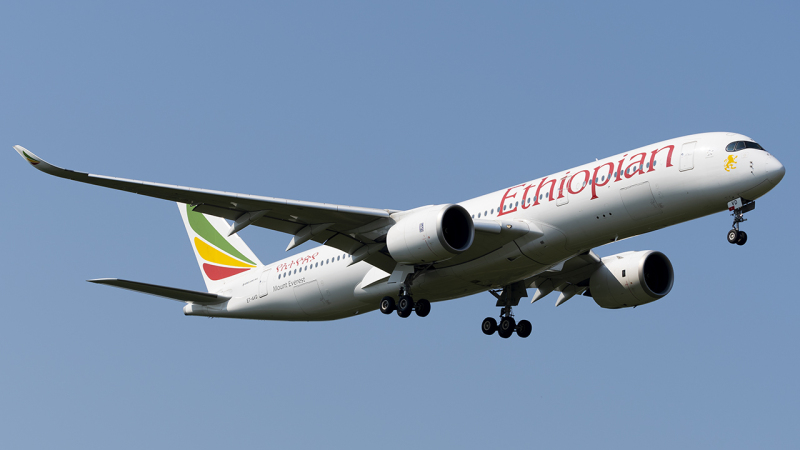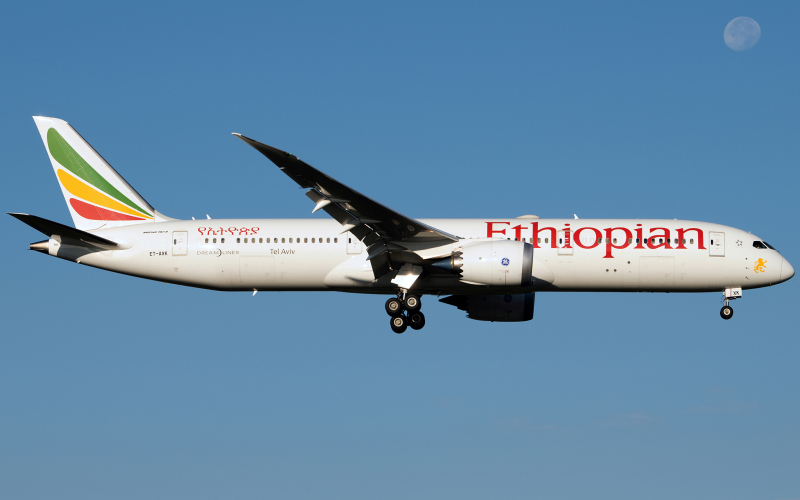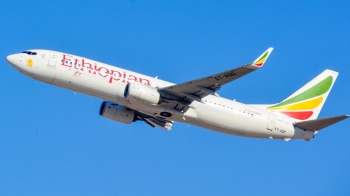Passengers and ATC alike in Ethiopia were in for a scare on Monday when Ethiopian Airlines flight ET343 from Khartoum, Sudan (KRT) to the Ethiopian capital of Addis Ababa (ADD) failed to descend as expected.
Instead, the plane remained on autopilot at 37,000 feet (FL370) as it passed over the runway and approach path. The likely explanation: the pilots were asleep. Air Traffic Control had repeatedly attempted to contact the pilots to no avail, and only after an alarm in the cockpit went off did the pilots begin to descend the plane and land safely. The aircraft, a Boeing 737-800, eventually landed approximately 25 minutes after the pilots began the descent.

The incident is troubling on several fronts. Firstly, Ethiopian Airlines' safety record has already been tarnished by the March 2019 737-MAX 8 crash on flight ET302. Add in this incident, and the safety record surrounding the airline is beginning to look problematic. Pilot fatigue is a prevalent issue, and the fact that both pilots were able to fall asleep and miss the landing is a concerning sign for both the airline and its passengers. While Ethiopian Airlines has not stated anything about pilot fatigue regarding this incident, the airline has announced that both pilots have been suspended and removed from operations while an investigation unfolds, affirming how safety is at its top priority. The airline has yet to confirm that the pilots fell asleep, conservatively writing only that ATC lost communication with the pilots.

Ethiopian Airlines is at present the largest airline in Africa and has been growing its presence as both a direct connection to Ethiopia and an airline to use as an alternative to the expensive Middle Eastern carriers. With such a stature, these sorts of incidents are amplified to a degree, and the response becomes ever more important. Addressing the root of the problem will be critical, and hopefully, passengers' future fears will be quelled.
Pilots taking short naps on flights is normal and is often used as a tool to prevent fatigue, especially on long-haul flights. However, it is not conventional for both pilots to be asleep such that nobody is actively monitoring the flight. It is unclear when and how exactly both pilots suddenly became asleep or unable to man the aircraft, but as the ongoing investigation unfolds, more answers will become available.
Comments (1)
 US Tourist Visa
US Tourist Visa Checklist is one of the most valuable visas. We serve visas for the US. Here we give the US tourist visa checklist. We will help to take you through the different steps. This will make you hamper-free from getting the visa.
https://www.myairticket.co/us-tourist-visa-checklist/
US Tourist Visa
US Tourist Visa Checklist is one of the most valuable visas. We serve visas for the US. Here we give the US tourist visa checklist. We will help to take you through the different steps. This will make you hamper-free from getting the visa.
https://www.myairticket.co/us-tourist-visa-checklist/
Add Your Comment
SHARE
TAGS
NEWS Ethiopian Ethiopian Airlines Fatigue Incident Missed Landing Ethiopia Boeing 737 Boeing 737-800RECENTLY PUBLISHED
 Learjet Owned By Vince Neil Crashes Into Gulfstream Jet, 1 Fatality Confirmed
On February 10th, around 14:30 local time, a Learjet private jet aircraft crashed into another private jet after landing at Scottsdale Airport (SCF) in Arizona.
NEWS
READ MORE »
Learjet Owned By Vince Neil Crashes Into Gulfstream Jet, 1 Fatality Confirmed
On February 10th, around 14:30 local time, a Learjet private jet aircraft crashed into another private jet after landing at Scottsdale Airport (SCF) in Arizona.
NEWS
READ MORE »
 Seattle Plane Strike 2025: Japan Airlines and Delta Collision Raises Safety Concerns
Seattle-Tacoma International Airport saw a concerning incident on Wednesday morning when a Japan Airlines (JAL) plane clipped a parked Delta Air Lines jet while taxiing. Thankfully, no one was injured, but passengers described the collision as a frightening experience.
NEWS
READ MORE »
Seattle Plane Strike 2025: Japan Airlines and Delta Collision Raises Safety Concerns
Seattle-Tacoma International Airport saw a concerning incident on Wednesday morning when a Japan Airlines (JAL) plane clipped a parked Delta Air Lines jet while taxiing. Thankfully, no one was injured, but passengers described the collision as a frightening experience.
NEWS
READ MORE »
 Ethiopian Airlines Expands Cargo Fleet with New Boeing 777 Freighter
Ethiopian Airlines has expanded its cargo fleet with a brand-new Boeing 777 Freighter, registered as ET-BAB (MSN 68140). The aircraft was delivered directly from Boeing’s factory in Everett, Washington, USA, and landed at Addis Ababa Bole International Airport at 3:41 PM (GMT+3) on Wednesday, January 22, 2025.
NEWS
READ MORE »
Ethiopian Airlines Expands Cargo Fleet with New Boeing 777 Freighter
Ethiopian Airlines has expanded its cargo fleet with a brand-new Boeing 777 Freighter, registered as ET-BAB (MSN 68140). The aircraft was delivered directly from Boeing’s factory in Everett, Washington, USA, and landed at Addis Ababa Bole International Airport at 3:41 PM (GMT+3) on Wednesday, January 22, 2025.
NEWS
READ MORE »




